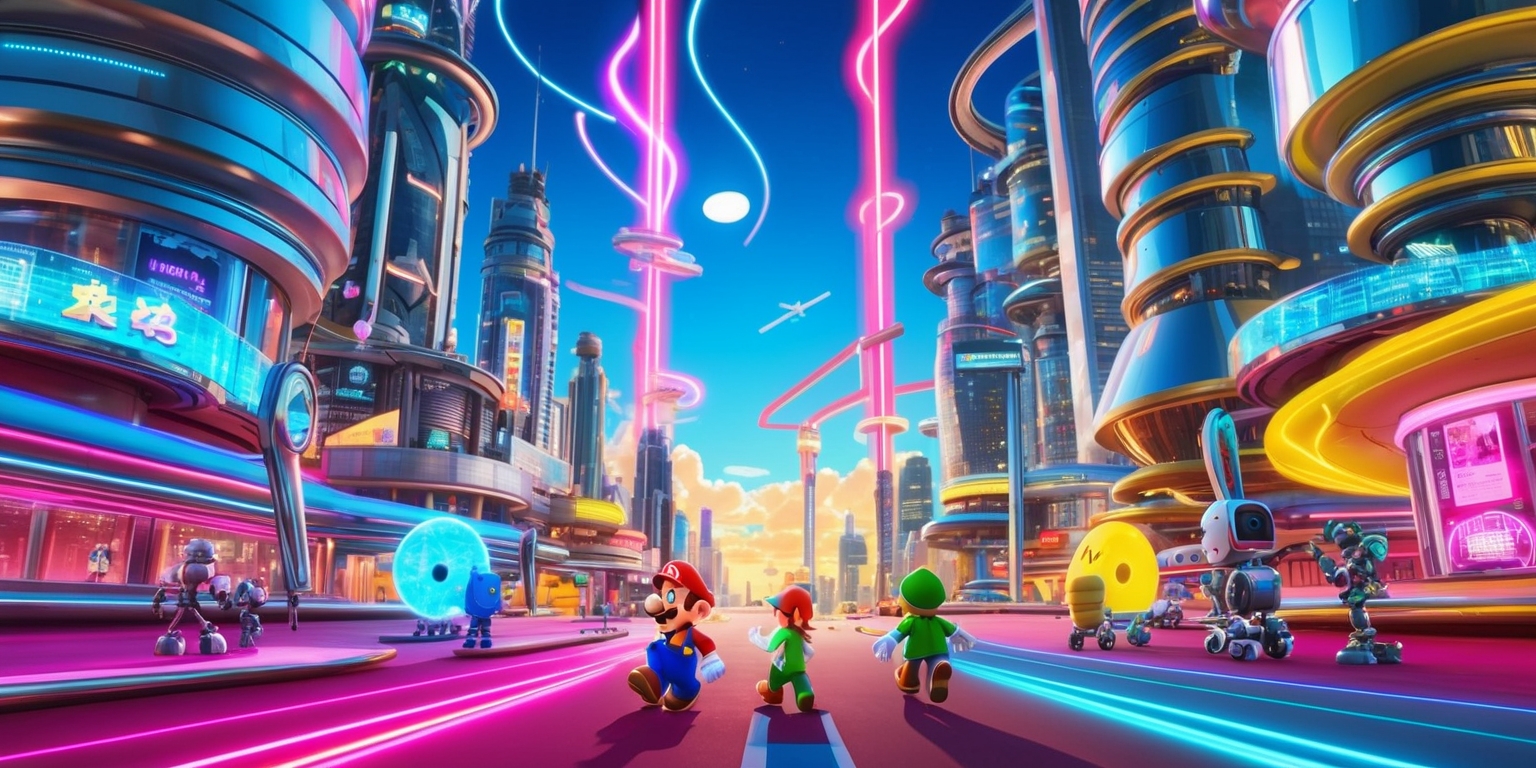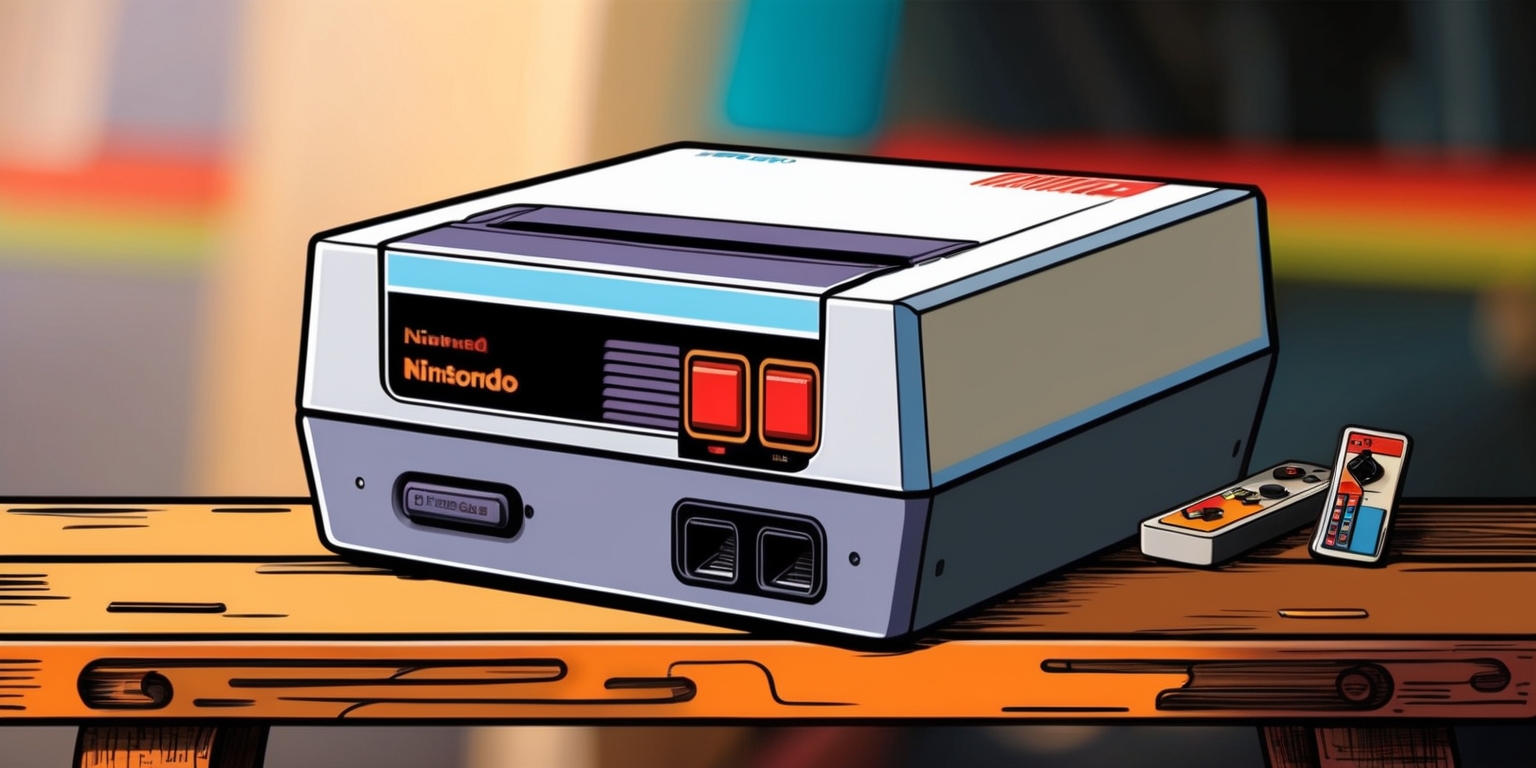Nintendo’s Next Era: Merging Classic Charm with Futuristic Innovation
- 957

The unveiling of Nintendo's latest console innovation has sparked excitement across gaming communities, as enthusiastic onlookers have spent countless hours discussing every detail of the new hardware and its accompanying accessories. The promise of advanced gameplay experiences, refined ergonomics, and enhanced functionality has ignited passion among both longtime fans and curious newcomers. Each feature seems to offer something unique—a blend of nostalgic homage to classic designs and forward-thinking technology that pushes the envelope of handheld entertainment. Every shared insight and reaction not only builds anticipation but also adds layers to the conversation surrounding this console revolution. With rich details emerging from both official channels and fan interpretations, it is clear that the gaming landscape is on the brink of transformative change.
Reinventing the Core Console Design
The revamped console stands as a testament to Nintendo’s dedication to innovation, merging tradition with cutting-edge design elements. The device introduces fresh hardware aesthetics that balance form and function, offering an enhancement to the beloved legacy of its predecessors. Its build reflects meticulous attention to ergonomics and user comfort, especially with the refined contours of the Joy-Con 2 controllers. The associated dock has been reimagined to accommodate new connectivity options while still considering backward compatibility with the original console lineup. Fans have shared detailed observations regarding the visual build and vent placements, speculating on the potential for integrated ports or air vents designed to optimize performance. The design philosophy extends to every aspect of the console, ensuring that its physical presence is both bold and accessible to a diverse range of gamers.
Advanced Control with Joy-Con 2 and Grip Enhancements
The Joy-Con 2 controllers represent an evolution in Nintendo’s iconic approach to interactive hardware, building upon the successes of previous iterations. The ergonomic design has been updated to deliver a more comfortable grip and responsive control, catering to long gaming sessions without sacrificing precision. The controllers, paired with an updated grip accessory, allow now a wider variety of gameplay styles, integrating intuitive Elements that strike a chord with both recreational players and seasoned competitors players. Feedback indicates that the tactile sensation provided by these controllers creates a natural connection between the gamer and the immersive worlds presented on the screen. Moreover, users have noted that the controls manage to honor the simplicity of classic designs while incorporating modern enhancements—making them not only a tool for play but a symbol of the bridge between gaming history and its future innovations.
Enhanced Pro Controller Capabilities
Alongside the revamped Joy-Cons, Nintendo has introduced an upgraded Pro Controller that promises an exceptional gameplay experience. The new controller has drawn attention for its refined mechanics and functional design enhancements. Gamers have been quick to express relief at the innovation, especially given concerns over compatibility with previous models. The Pro Controller is reported to work seamlessly with both new and older consoles, indicating Nintendo’s commitment to offering versatility. One Among the most notable enhancements is the implementation of refined haptic feedback mechanisms, which have been dubbed as HD Rumble 2, delivering immersive sensations during critical moments in gameplay. This innovation not only heightens the intensity of gameplay but also ties in with the holistic experience Nintendo aims to create, ensuring that every command and interaction feels immediate and engaging.
User Interaction Through the New Camera Accessory

Among the most unexpected enhancements to this… ecosystem is the external camera, which introduces exciting possibilities for user interaction beyond the traditional gaming paradigm. Despite not being bundled directly with the console, this accessory sparks intrigue among fans, tapping into the era of interactive media where live video elements enrich gameplay. Many enthusiasts speculate on its intended use for augmented reality interactions and personalized avatars that reflect the player’s own expressions, potentially integrating with character customization in various game titles. The design of the camera hints at modern features that could allow for secure usage, ensuring that only the authorized user’s image is processed. This integration of camera technology places the console in direct competition with other interactive devices while promising a privacy-conscious approach that aligns with modern user expectations.
Innovative Accessories: Steering Wheel and Beyond
The accessory line-up includes an imaginative twist with the introduction of a Joy-Con 2 steering wheel, expanding the console's versatility for racing and party games. This innovative peripheral converts the traditional Joy-Con experience into a more dynamic and tactile racing simulation, catering especially to fans of high-octane competition in titles like Mario Kart. The design of the steering wheel emphasizes not only ergonomic comfort but also robust compatibility with various gameplay modes, ensuring an engaging and smooth experience on every track. Gamers have appreciated the thoughtful integration with existing game titles, noting that the accessory offers a fresh perspective on familiar games. This creative approach to accessories is a clear example of Nintendo’s knack for redefining the way traditional hardware components interact within a game, sparking lively community debates and inventive new playstyles.
Seamless Integration with Legacy Systems
The conversation around compatibility continues to be a hot topic among gaming enthusiasts, as early indications suggest that the new system supports a range of legacy hardware. The promise to sync the original Joy-Cons and even accommodate the initial Pro Controller is a reassurance to long-time fans wary of losing their collection value. Such backward compatibility nurtures a sense of continuity and respect for the company’s legacy, ensuring that previous investments in gaming accessories are not rendered obsolete overnight. Community chatter surmises that this integration could extend to various unique game experiences like those from the era of the Nintendo Switch. It exemplifies a desire to retain familiarity even amid substantial technological upgrades, effectively bridging generational gaps and preserving cherished memories while delivering high-end performance and an enhanced interactive experience.
The Magic Behind Refined Haptics and Rumble Technology
Enhancements in tactile feedback are at the forefront of what differentiates this console from its competitors. The newly introduced HD Rumble 2 goes beyond mere vibration, offering nuanced, localized sensations that can change dynamically based on in-game scenarios. Many discussions have emerged around the improved fidelity of these haptic effects, comparing them favorably against those seen in modern home consoles. This innovation promises to elevate the physical immersion, whether in a high-speed chase or during quieter, exploratory phases of gameplay. By refining the haptics, Nintendo has not only created a more immersive experience but has also demonstrated its commitment to setting a new standard in tactile interactivity. This layer of sensory feedback enriches game narratives and elevates critical gameplay moments to unparalleled levels of excitement, with each rumble resonating more authentically with the player.
The Evolution of On-Screen Interface and Customizations
Along with physical enhancements, attention has also been paid to the user interface and overall system aesthetics. Early glimpses of the 3D viewing options provided in the Nintendo Today app suggest that the console's UI is designed with versatility and modernity in mind. Users are already discussing customizable themes, enhanced menu navigation, and remodeled settings that appear both intuitive and visually appealing. The interface upgrade seems to be a nod to the simplicity that long-time fans appreciate, combined with modern functionalities that allow gamers a deeper level of system personalization. Despite the subtle cues of minimalistic design, the interface hints at potential for versatile arrangement, promising a seamless blend of navigation ease with an attractive display. This evolution marks Nintendo's continued journey to redesign and optimize the digital user experience for a new era of gaming enthusiasts.
Price and Value in a Competitive Market
As details emerged, discussions quickly turned to the price point of the new hardware in relation to its impressive list of features. The balance between high-end performance, innovative accessories, and modern control systems has inevitably led to debates regarding its market value. While the console carries a considerable price tag, enthusiasts argue that the long-term benefits of backward compatibility, refined controls, and immersive haptics justify the initial investment. Many speculations have arisen about different tiers of product offerings, including a potential lighter version that might cater to a broader audience. The conversation is further fueled by comparisons with other handheld devices and multifunctional gaming systems already available on the market. This pricing dynamic fuels a broader discussion about value, with gamers eager to analyze whether each innovation offers a tangible return on investment in terms of enhanced gaming outcomes and overall enjoyment.
Comparative Analysis and Market Positioning
This next iteration of Nintendo’s console ecosystem invites numerous comparisons with current industry standards such as multifunctional portable consoles. Gamers have recounted various experiences, drawing parallels between this new system and other devices that offer complementary phones or tablets functionalities. Despite the presence of several handheld competitors boasting advanced specs, Nintendo appears to have hit the sweet spot by merging nostalgia with technology. Incorporating one-of-a-kind accessories like the camera and steering wheel provides distinctive selling points that set it apart from multifunctional devices like the Steam Deck. Observers are keenly weighing the new system's strengths and potential shortcomings, particularly in terms of exclusive game offerings versus multi-platform compatibility. Through energetic discussions, it is evident that this console is poised to maintain a revered status, capitalizing on its rich legacy as well as its forward-thinking innovations.
Community Reactions and Shared Gaming Experiences
Across social media platforms and dedicated forums, gamers are bustling with opinions, shared images, and live reactions to every revealed detail about the new console and its accessories. Social interactions reveal that users are not only evaluating the physical aspects of the hardware but are also excited by the potential for collaborative play and innovative game modes. Enthusiasts have debated the merits of various components, from the ergonomics of the controllers to the integration of sensory feedback technologies. Community members have expressed anticipation over bundled offers and themed editions, drawing upon nostalgic memories tied to earlier console successes. The diversity in opinions highlights a broader cultural conversation around the console’s role in fostering community and shared experiences. Discussions emphasize creative gameplay, the thrill of competitive multiplayer battles, and the excitement of new game narratives—all forming an integral part of the collective anticipation that surrounds this latest release.
Exploring the Unique Experiences Tailored for the New Hardware
Every aspect of the new system seems to be crafted with an eye toward enhancing the overall gaming narrative. The rich blend of traditional elements coupled with modern enhancements creates a setting where gameplay transcends simple entertainment. The array of new accessories expands interactive possibilities, hinting at immersive experiences that combine tactile innovation with dynamic visuals. Gamers are already speculating on the potential for unique game titles that leverage the console's bespoke features—titles where precision, immersion, and custom control schemes become the norm rather than the exception. From faster processing speeds to improved spatial navigation capabilities, each component is aimed at creating a more integrated and compelling environment. As players anticipate the opportunities for both single-player adventures and dynamic multiplayer sessions, this console positions itself as a gateway to a universe where innovative design meets the art of storytelling in interactive media.